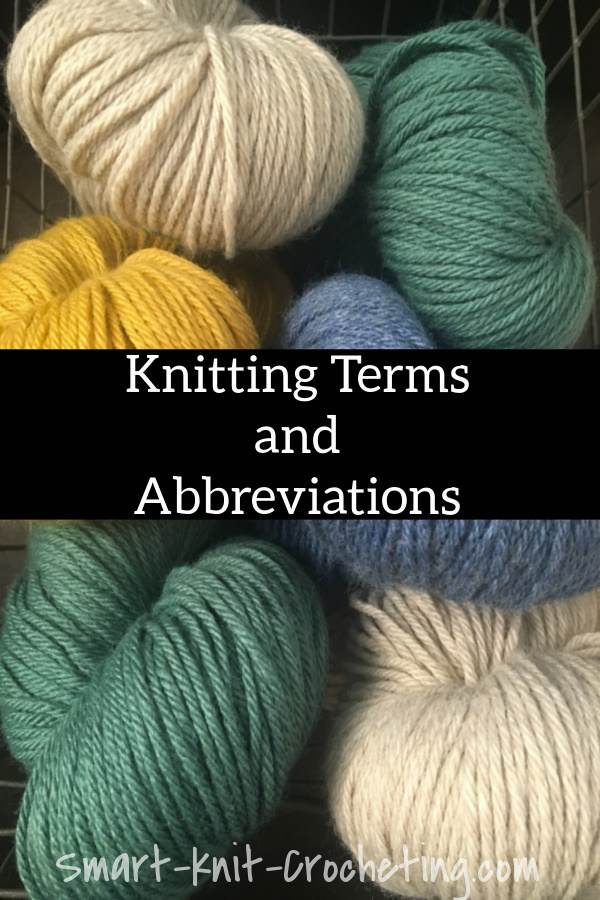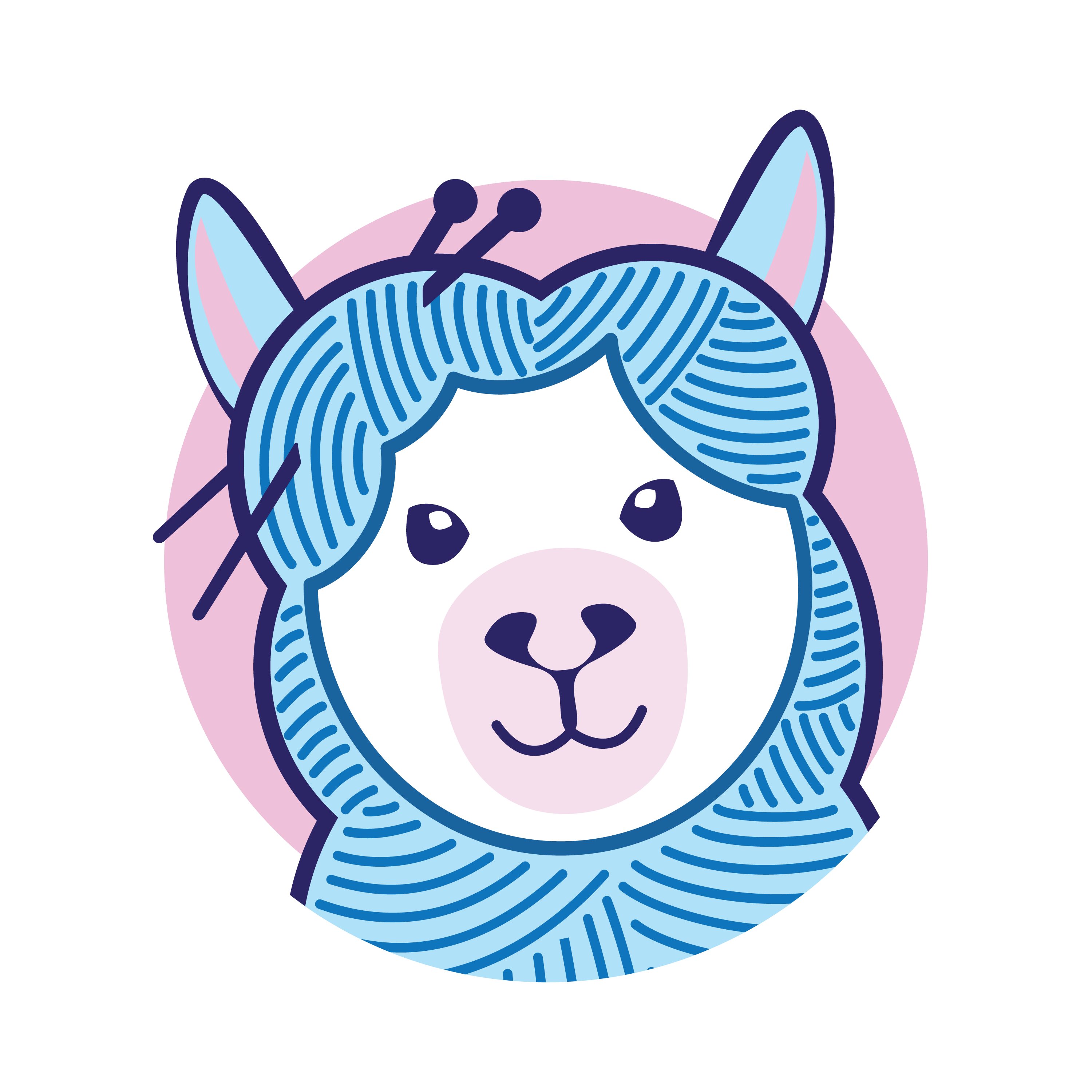- Home
- How to Knit: Basics
- Knitting Terms and Abbreviations
Common Knitting Terms and Abbreviations Used in Patterns Explained
By Janice Jones
Knitting terms and abbreviations can seem like they are from a different language when you are first getting started, but after learning a few of the most basic terms, it will all make sense.
When you first explore a knitting pattern, you will notice that much of it looks like a long line of abbreviations. That is what it is. Symbols and letters represent words or phrases that give the knitter directions to proceed.
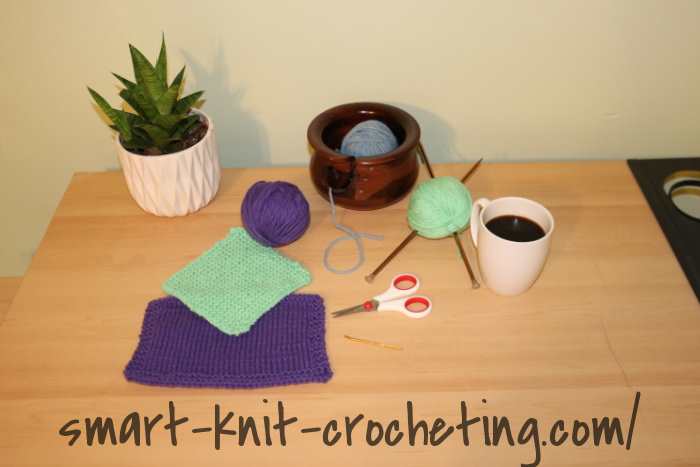 Knitting Terms and Abbreviations
Knitting Terms and AbbreviationsWhy So Many Terms and Abbreviations
You may not need to know many abbreviations and terms if you are just starting out with simple patterns, but as you progress, patterns may get more complicated and the knitting designers that write the patterns need to have a way to condense them into some more manageable.
Likewise, if you want to be a knit designer, you will want to know and understand standard knitting terms.
Knitters prefer the shorthand version because it has less text to read, making it easier to scan a pattern beforehand and decide if it is something they want to tackle. The less you must read, the faster you can begin your project.
The best part of using standardized abbreviations created by the Craft Yarn Council is that you can pick up any pattern and understand it. US designers often use different terms from those used in the UK and Europe.
Knitting Terms and Abbreviations: Examples from Real Patterns
Want a Free PDF version of this page? Click here to download Knitting Terms and Abbreviations.
Let’s take a real-world example from a simple knitting pattern for beginners.
Row 1 (RS) K1, *p1, k1; rep from* to end.
Breaking down this first line from a real pattern:
- RS - Right Side
- K - Knit (in this example, you would knit one stitch)
- * * Repeat the instructions between the two asterisks. In this example, you would repeat, "p1, k1, across to the end of the row.
- P - purl (here it means p1 stitch)
So, if this line were written in its entirety, in a knitting pattern instructions, it would read, “Starting with row 1, which will be your right side, knit one stitch. Next, purl one stitch, knit one stitch, repeat this knitting pattern, and purl one stitch until you reach the end of the row.
Therefore, using abbreviations makes sense so that patterns can be printed with less paper, and less reading is required.
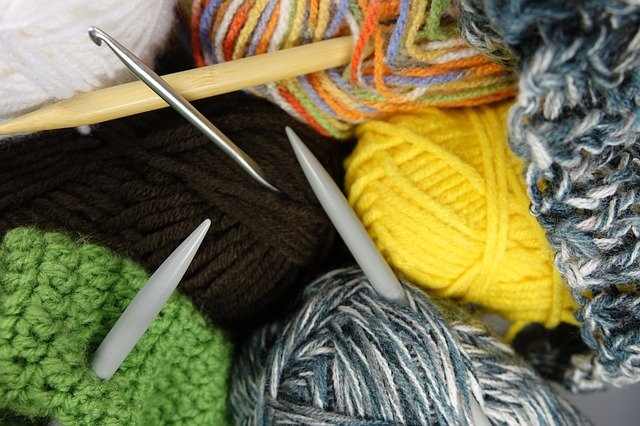
Knitting Terms and Abbreviations (in alphabetical order)
This comprehensive glossary of knitting terms includes all the most common abbreviations you will encounter as a beginner.
- approx - approximately
- beg - to begin, beginning
- bet - Between
- BO - bind off
- brk – Brioche-knit stitch ("bark")
- brp – Brioche-purl stitch ("burp")
- cdd – Centered double decrease (also centre double decrease)
- C2L - Cable 2 left; a cable stitch where you slip one stitch purlwise to a cable needle and hold the stitch in front of your knitting. Work the next stitch on your left-hand needle and then knit the stitch on the cable needle.
- C4L - Cable four left is a 2x2 cable knit. Slip two stitches purlwise to the cable needle, knit the next two stitches on the left-hand needle, and then knit the two on the cable needle.
- C2R - Cable two (2) right. To make a C2R, slip one stitch onto your cable needle purlwise and move it to the back of your knitting. Work the next stitch, then knit the stitch on your cable needle.
- C4R - Cable four right is a 2x2 cable knit. To make the C4R, slip two stitches purlwise onto your cable needle and hold them behind your knitting. Knit or purl the next two sts, then work the stitches on the cable needle.
- CO - Cast on
- cc - Contrasting Color
- cont - continue
- cn - Cable needle
- dec - decrease
- Dpn or dpns - double point needles
- EOR, EON – End of row / End of needle
- foll - follow(s)
- inc - increase
- in/cm/mm - inches/centimeters/millimeters
- K - knit stitch
- k1B - a knit stitch in the row below
- K2tog - Knit two together (meaning insert the needle into two stitches and knit them together as if it were one stitch, which is a common way to decrease the number of stitches on the needle; it is a right-leaning decrease and the mirror image of the SSK.
- k2tog tbl, p2tog tbl – Knit/Purl two together through the back loops
- K3tog - Knit three together (same as k2tog except you would be picking up three stitches together instead of two)
- k tbl - knit the stitch through the back of the loop of the stitch
- K tfl - knit the stitch through the front loop only
- Knitwise - Insert the needle into the stitch as if you were going to knit the stitch
- kfb or kf&b - Knit in the front and then the back of the same stitch. It is an easy way to increase a stitch and leaves a horizontal purl bump under the increased stitch.
- kfbf – Knit front, back, front (used to increase two stitches from 1)
- ksp - knit one stitch, slip this stitch from right needle to left needle, pass the second stitch on left needle over first stitch, and off left needle. Lastly, return the stitch to the right needle, single right-leaning decrease
- LH - Left-Hand
- lp(s) - Loops
- LC - left cross, a left-leaning cable where the stitches are held in front
- LTCO - Long tail cast on
- MC / CC – Main Color / Contrast Color
- M1 - Make one stitch knitwise, single knit increase
- M1R - make one right; single right-leaning knit increase
- M1L - make one left; single left-leaning stitch, which is a knit increase
- ML - Magic loop
- Oz/g - ounces/ grams
- P - purl stitch
- P2together - P2tog - purl two stitches together, which is another way to decrease stitches on the needle
- P3tog - Purl three stitches together, another knit decrease stitch
- pat - pattern
- Pfb - Purl first in the front of the stitch and then in the back of the same stitch
- Pf&b – alternate spelling of pfb
- pm - place marker
- Psso - psso pass - Pass slip stitch over
- PU - Pick up stitches
- Purlwise - insert the needle into the stitch as if to make a purl stitch
- Sk2p - Slip one stitch, knit two together, and pass the slipped stitch over the k2together
- RC - right cross, a right-leaning cable stitch where stitches are held in the back.
- Rem - remains, remaining, remain.
- Rep or * or ( ) [ ] - repeat instructions within * or ( ) and [ ] as required
- Rep from or * - repeat the instructions after the asterisk as many times as indicated;
- Rep rows - when the exact instructions for one row are repeated over multiple rows.
- Rh needle - right-hand needle
- Reverse shaping - A term used when making sweaters or other garments where the shaping for both the right and the left front pieces is identical but reversed; they are mirror images of each other.
- RH - Right Hand
- Rnd - Rounds when working on circular needles or dpns in the round.
- RS - right side
- Skp - slip one stitch to the right-hand needle. Next, knit the next stitch and pass the slipped stitch over the knit stitch. Learn about the skp.
- S2KP - Slip 2, Knit, Pass. This reduces the number of stitches by two and is neatly centered (no leaning at all). (Also called Centered Double Decrease)
- Slip - Slip the number of stitches indicated from the left needle to the right needle without purling them
- Sl st - slip stitch. This usually refers to taking a stitch from the left-hand needle and placing it on the right-hand needle without working it.
- SSK - Slip Slip Knit: An alternative method for decreasing. Learn about the SSK.
- St or sts - stitches
- St or st - stockinette stitch or stocking stitch
- sm - stitch marker
- st m - stitch marker
- Tbl - through the back loop; as in K tbl (knit through the back loop) and P tbl (purl through the back loop)
- Tog - together
- yf-sl1yo – Yarn front, slip 1, yarn over setup in brioche
- W & T - Wrap and Turn
- Wyib - Means with yarn in back
- Wyif - with yarn in front
- Work even - continue to work the pattern without adding or deleting any stitches.
- WS - Wrong side
- Y/m - (Yards, meters)
- Yo - yarn over
- Yo2 - yo twice – same as above, another notation
- YON - Yarn over needle
Knitting Terminology Referring to Yarn
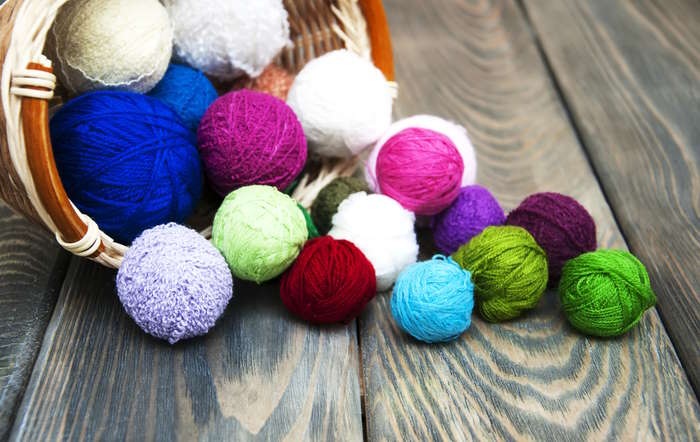
Bulky - a type of yarn that is thick, usually a number 5 or 6.
Cake - yarn sold in a kind of ball that resembles a cake
Dye Lot - the number assigned to a batch of yarn all dyed at the same time
Fingering - A fine yarn, usually a number 2
Hank - yarn wound in a long loop, twisted around itself, and secured with separate threads. It can't be worked until it is wound into a ball of yarn
Ply - the number of strands a yarn is composed of by twisting them together.
Skein - yarn wound into an oblong bundle. Learn more about how yarn is sold.
Superwash - yarn that has been chemically treated to remove scales from its surface. This prevents felting and allows machine-washing
Yarn Weight - the thickness of the yarn; according to the Craft Yarn Council, there are 7 weights of yarns from 1-7; also 0 for crochet thread.
WPI - wraps per inch. A method to determine yarn weight
Knitting Terms and Abbreviations: Size Terminology for Wearables
Cast on 109 (121, 133, 145, 157)
If you are creating a garment where size matters, you will likely encounter a pattern that can be used for multiple sizes.
For example, if you are making a sweater, the design may call for Small, Medium, Large, 1X, or 2X).
The first number usually outside of the parentheses would refer to the small size, the second indicates the medium size, and so forth in the instructions.
So, your pattern might say, Cast on 109 (121, 133, 145, 157). If you were making a small-sized sweater, you would cast on 109 stitches, and for a medium-sized sweater, 121 stitches.
Before determining the size, always refer to the pattern's sizing and measure the person for whom you are making the garment.
More Knitting Terms and Abbreviations
Here are some more common terms and lingo you will likely encounter early on in your knitting journey.
Alt rows: work on every other row
Bind off in rib: This means to bind off in the same pattern used for ribbing, such as K1, P1, or K2, P2.
Back of work: The side of your work that faces away from you when you hold the needles
Block, Blocking: This is a finishing term that refers to laying your work down and shaping or forming it into the finished product. It often involves the use of steam or a wet cloth. The most common form of blocking is to soak the object in lukewarm water for about 15 to 20 minutes, then, without wringing out, press it between a dry towel to squeeze out more of the moisture. Lay the object flat and pin it to shape. More on Blocking.
Cont in pattern: This term is used when you have a specific stitch or color pattern you are working on. It means to continue in the way you are working.
Crochet hook - The type of tool used in crochet, which helps pick up dropped stitches. Learn more about crochet hooks.
Frog, frogging - to rip out previously worked stitches to correct a mistake.
Gauge - The knitting gauge measures the number of stitches required for a project of the correct size. It can be broken down to include the number of stitches needed on the needle, the number of rows worked, and the type of stitch used. This is important because some people knit tightly, while others knit loosely, and this standardized method ensures that all knitters create a project of the correct size. Learn more about gauge.
Garter stitch - another term for knitting every stitch. Garter Stitch
I-Cord - a thin cord in stockinette stitch
Intarsia - knitting in multiple colors in one row through a special joining method and the use of bobbins or individual balls of different colors
Jog - a visible stair-like pattern that may occur after a color change when knitting in the round. There are methods to correct this and have a jogless join.
Knit side - Often used when describing a stockinette pattern where the knit side is the right side or front of the work, and the wrong side or the back of the work is the purl side
Leading leg - the part of a knitting stitch closest to the tip of the needle.
Lifelines - a strand of yarn inserted into the work so that it is easy to rip back to that point if an error is encountered.
Long tail - typically seen in long-tail cast-on, which is one method of casting on or placing stitches on the needle before beginning to knit. Learn more about the long tail cast on.
Mattress stitch - A seaming technique to join two pieces of knitting. Mattress Stitch
Needle size - refers to the size of the circumference of the knitting needle and can be written in Metric (mm) or American style. Learn more about knitting needles.
Slip knot - The first knot made when beginning to cast on stitches. It anchors the yarn to the needle. There are several methods for creating a slip knot.
Stash - all the yarn you own
Trailing leg - the part of the stitch that is connected to the working yarn.
Working Yarn - the yarn that is connected to the yarn ball or skein
Skill Level Designations on Knitting Patterns
Many patterns will have a skills level icon that has been assigned based on the recommendations of the Craft Yarn Council of America’s rating system. Skills range from beginner to experienced.
Basic or Beginner: Beginner Projects are designed for first-time knitters who are familiar with basic knit and purl stitches. There is minimal shaping required.

Easy: Easy projects utilize basic stitches, simple color changes, straightforward shaping and finishing, and repetitive stitch patterns.

Intermediate: Intermediate Projects will involve using a variety of different stitches and may incorporate basic cables and lace or knitting in the round. There will be mid-level shaping and finishing techniques used.

Experienced, Advanced, Complex: Experienced projects utilize advanced techniques and stitches not encountered in any of the first three levels. Expect to see Fair Isle, intarsia, cables, lace patterns, and many different color changes.

Knitting Terms and Abbreviations: Pin for Future Reference
Knitting Terms and Abbreviations: Conclusion
I know this is a lot to take in, but you don’t need to memorize all of these terms at once.
The patterns on this site will have easy-to-follow instructions, and you can always bookmark this page and come back to it often.
